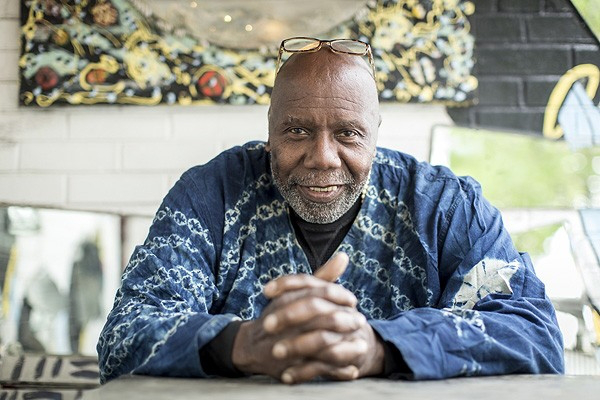
Olayami Dabls - Keynote SpeakerOlayami Dabls - Keynote Speaker
Olayami Dabls, the founder and curator of MBAD African Bead Museum and Dabls African Bead Gallery, created the project with the intention to use art for its original purpose in Africa. Instead of using art for entertainment or to make money, he uses art to stimulate emotional and cultural healing.
Dabls set off to see if our planet's materials really helped the validity of the African ideal when he first created his installation and museum located at Grand River and W. Grand Blvd. in Detroit, Michigan. His purpose as an artist and educator was confirmed when he found that people naturally are drawn to MBAD to see the beacon and explore themselves through the art because they are already attuned to this ancient way of healing. Dabls also has a mural located in Eastern Market representing African women during enslavement and colonization through the use of triangle shapes, depictions of birds, symbols, and cultural materials. An additional mural is located at the intersection of Grand River and Warren with similar cultural materials depicting snakes, which have many symbolic interpretations and are known as the predator without limbs.
During the 1970's, he began working at the Afro-American Museum which was founded in 1965, and the second African art museum in the country established at the time. Later the name was changed to The African American Museum in 1978 and sometime in the 1990s it was changed to The Charles H. Wright Museum of African American History. The people he worked with there had the preconception that African masks, textiles, and culture appeared frightening. Dabls had to wonder why a person would be afraid of their own culture, but feel enlightened going down the street to the Detroit Institute of Arts which focuses on European art. This catapulted him into learning as much as he possibly could about African material culture, because he felt it was his responsibility to share this knowledge in order to educate those around him. During this time, the museum world was run and determined by European Museums. In 1994, upon realizing this was indoctrination and colonization of art happening right in front of his eyes, he decided to build a museum that talked about material culture (art) from an African perspective.Type here the content of the page or click on some items in the Common Objects-section to add more images, titles and texts to your page

